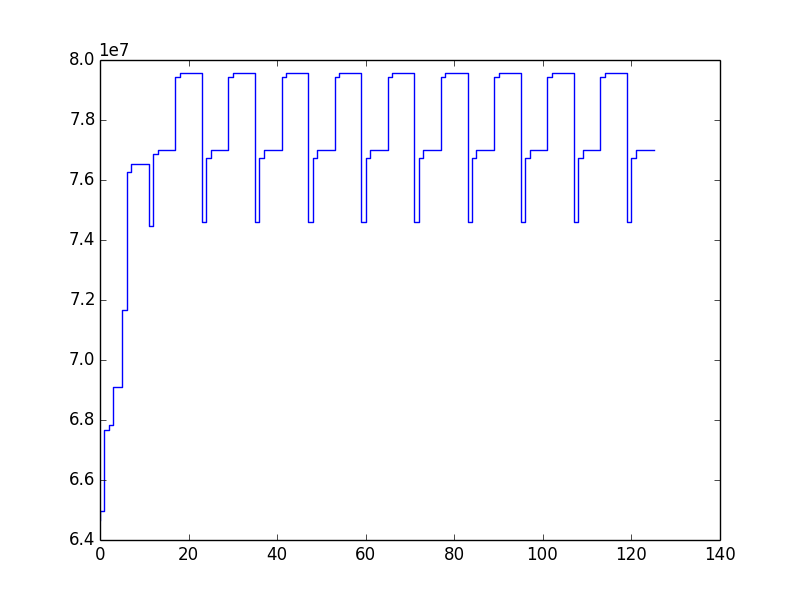Usage¶
The main component in the pikos toolset is the Monitor. A monitor creates a number of records during the execution of the code which are passed on the recorder to be stored into memory or file.
In code¶
Monitors can be used programmatically in a number of ways.
Enabled/Disabled using the corresponding functions:
from pikos.api import screen from pikos.monitors.api import FunctionMonitor monitor = Monitor(recorder=screen()) monitor.enable() # monitored code # monitor.disable()
A monitor instance can be used as a context manager:
from pikos.api import screen from pikos.monitors.api import FunctionMonitor monitor = Monitor(recorder=screen()) with monitor: # monitored code # pass
With the use of the attach method a monitor becomes a decorator:
from pikos.api import screen from pikos.monitors.api import FunctionMonitor monitor = Monitor(recorder=screen()) @monitor.attach def monitored_function(): # monitored code # pass
Finally the pikos.api module provides easy to use decorator factories for the standard monitors. The factories can optionally accept a recorder and dictate if a focused monitor should be used:
from pikos.api import function_monitor, csv_file @function_monitor(recorder=csv_file(), focused=True) def monitored_function(): # monitored code # pass
Command line¶
The standard pikos monitors can be also used throught a command prompt tool, pikos-run:
usage: pikos-run [-h] [-o OUTPUT] [--buffered] [--recording {screen,text,csv}]
[--focused-on FOCUSED_ON]
{functions,line_memory,lines,function_memory} script
Execute the python script inside the pikos monitor context.
positional arguments:
{functions,line_memory,lines,function_memory}
The monitor to use
script The script to run.
optional arguments:
-h, --help show this help message and exit
-o OUTPUT, --output OUTPUT
Output results to a file
--buffered Use a buffered stream.
--recording {screen,text,csv}
Select the type of recording to use.
--focused-on FOCUSED_ON
Provide the module path(s) of the method where
recording will be focused. Comma separated list of
importable functions
Example¶
Given the code bellow:
""" Mandelbrot Set example
Code from the Tentative Numpy Tutorial
url: http://wiki.scipy.org/Tentative_NumPy_Tutorial/Mandelbrot_Set_Example
"""
from numpy import *
import pylab
def mandelbrot(h, w, maxit=20):
'''Returns an image of the Mandelbrot fractal of size (h,w).
'''
y,x = ogrid[-1.4:1.4:h*1j, -2:0.8:w*1j]
c = x+y*1j
z = c
divtime = maxit + zeros(z.shape, dtype=int)
for i in xrange(maxit):
z = z**2 + c
diverge = z*conj(z) > 2**2 # who is diverging
div_now = diverge & (divtime==maxit) # who is diverging now
divtime[div_now] = i # note when
z[diverge] = 2 # avoid diverging too much
return divtime
if __name__ == '__main__':
pylab.imshow(mandelbrot(400,400))
pylab.show()
Running:
pikos-run line_memory examples/mandelbrot_set_example.py --recording csv --focused-on=mandelbrot
from the root directory will run the mandelbrot example and record the memory usage on function entry and exit while inside the mandelbrot method. The monitoring information will be recorded in csv format in the monitor_records.csv (default filename).
CSV Sample¶
index,function,lineNo,RSS,VMS,line,filename
0,mandelbrot,16,64679936,382787584," y,x = ogrid[-1.4:1.4:h*1j, -2:0.8:w*1j]",examples/mandelbrot_set_example.py
1,mandelbrot,17,64962560,383229952, c = x+y*1j,examples/mandelbrot_set_example.py
2,mandelbrot,18,67678208,386056192, z = c,examples/mandelbrot_set_example.py
3,mandelbrot,19,67817472,386056192," divtime = maxit + zeros(z.shape, dtype=int)",examples/mandelbrot_set_example.py
4,mandelbrot,21,69103616,387338240, for i in xrange(maxit):,examples/mandelbrot_set_example.py
5,mandelbrot,22,69103616,387338240, z = z**2 + c,examples/mandelbrot_set_example.py
6,mandelbrot,23,71671808,389902336, diverge = z*conj(z) > 2**2 # who is diverging,examples/mandelbrot_set_example.py
7,mandelbrot,24,76263424,394760192, div_now = diverge & (divtime==maxit) # who is diverging now,examples/mandelbrot_set_example.py
8,mandelbrot,25,76529664,394760192, divtime[div_now] = i # note when,examples/mandelbrot_set_example.py
9,mandelbrot,26,76529664,394760192, z[diverge] = 2 # avoid diverging too much,examples/mandelbrot_set_example.py
10,mandelbrot,21,76537856,394760192, for i in xrange(maxit):,examples/mandelbrot_set_example.py
11,mandelbrot,22,76537856,394760192, z = z**2 + c,examples/mandelbrot_set_example.py
12,mandelbrot,23,74452992,392675328, diverge = z*conj(z) > 2**2 # who is diverging,examples/mandelbrot_set_example.py
13,mandelbrot,24,76881920,395235328, div_now = diverge & (divtime==maxit) # who is diverging now,examples/mandelbrot_set_example.py
14,mandelbrot,25,77012992,395235328, divtime[div_now] = i # note when,examples/mandelbrot_set_example.py
15,mandelbrot,26,77012992,395235328, z[diverge] = 2 # avoid diverging too much,examples/mandelbrot_set_example.py
16,mandelbrot,21,77012992,395235328, for i in xrange(maxit):,examples/mandelbrot_set_example.py
17,mandelbrot,22,77012992,395235328, z = z**2 + c,examples/mandelbrot_set_example.py
18,mandelbrot,23,79441920,397795328, diverge = z*conj(z) > 2**2 # who is diverging,examples/mandelbrot_set_example.py
19,mandelbrot,24,79572992,397795328, div_now = diverge & (divtime==maxit) # who is diverging now,examples/mandelbrot_set_example.py
The first column is the record index, followed by the function name and the line number where (just before execution) the RSS, VMS memory counters for the python process are recorded. The last two column contains the python line of the function.
Note
This record type is specific to the LineMemoryMonitor.
Plot Data¶
loading the csv file into ipython we can plot the graph of record index to RSS memory usage of the python process while executing the mandelbrot function:
In [1]: import numpy
In [2]: import pylab
In [3]: data = numpy.loadtxt('monitor_records.csv',usecols=[0, 3], delimiter=',', skiprows=1)
In [4]: pylab.plot(data[:, 0], data[:, 1], drawstyle='steps')
In [5]: pylab.show()

The plot of record index vs RSS memory usage (in bytes) of the python process when running the mandelbrot function.